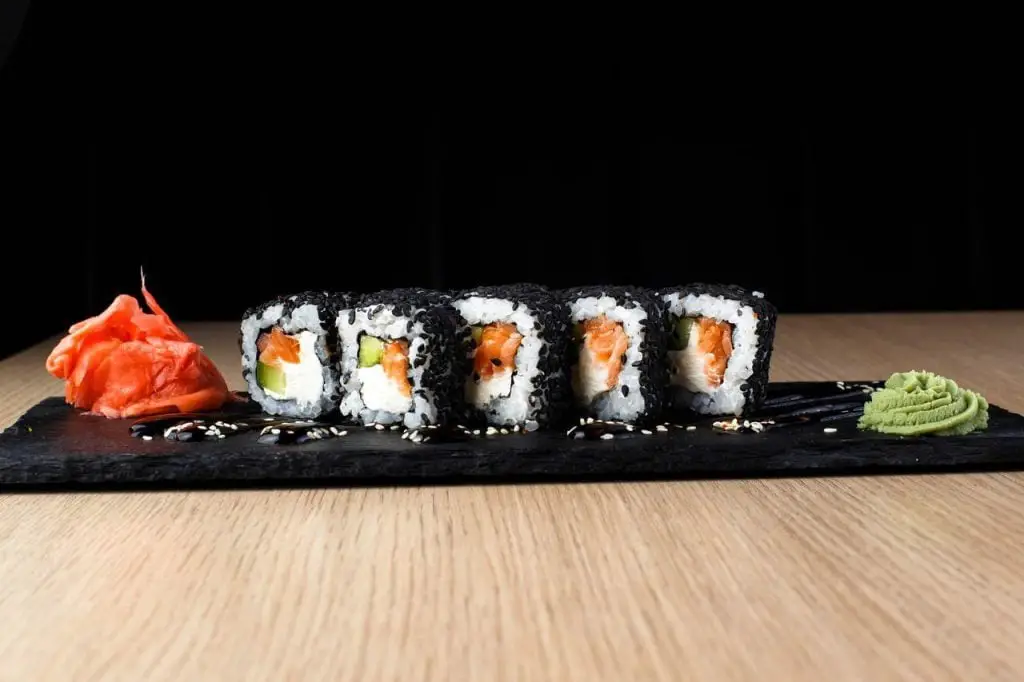Sushi has existed since the 6th century BCE and was initially used to preserve fish. It wasn’t until the Edo period that people began eating raw fish as a delicacy, and today there are many kinds of sushi – including nigiri (slices of raw fish over rice), maki (rolled in seaweed), and Chirashi (sashimi served over rice).
The history of sushi is long, with records of it being eaten as far back as the 6th century BCE.
The history of sushi is long, with records of it being eaten as far back as the 6th century BCE. It’s believed that the first type of fish used in sushi was salmon. The first-time sushi was mentioned in Japan was during the Murom Achi period (1336-1573), when people began eating raw fish wrapped in rice, vinegar and salt. Sushi became popular during the Edo period (1603-1868) when fishermen would catch large amounts of fish and preserve them for later use by fermenting or pickling them in salt brine for months at a time until they were ready to eat fresh again without having to go through all the work involved in preserving them themselves!
Sushi was initially eaten to preserve fish.
As we know it today, the Japanese initially enjoyed sushi to preserve fish. The fermentation process was used to ensure the fish didn’t go wrong, and then it became a delicacy.
You may be wondering why sushi had become so popular worldwide when it was initially made with mackerel (a type of fish) because people started using raw tuna instead, which tastes better than mackerel!
What about seaweed? You might think that seaweed would have been one of the first ingredients to make sushi rolls–but no! Rice has been used since ancient times to preserve food; without refrigeration or freezing technology available back then, this helped keep meat from spoiling quickly after being hunted down by hunters like yourself!
Salmon is believed to be the first type of fish to be used in sushi.
The first type of fish to be used in sushi was salmon. The fish became popular during the Edo period and remains a common ingredient in many types of sushi today.
Sushi became popular in Japan during Edo, when people ate raw fish delicately.
The Edo period is often called a time of peace and prosperity. The samurai class were well-protected by their lords, so they had more time to devote to art, culture and food. During this time, sushi became popular in Japan as a delicacy both men and women enjoyed.
Today, there are many kinds of sushi – including nigiri (slices of raw fish over rice), maki (rolled in seaweed), and Chirashi (sashimi served over rice).
Today, there are many different kinds of sushi – including nigiri (slices of raw fish over rice), maki (rolled in seaweed), and Chirashi (sashimi served over rice).
Sushi is often eaten with soy sauce and wasabi.
The word “sushi” combines the verb suru (“to press”) and the noun sushi (“cooked rice”).
The word “sushi” combines the verb suru (“to press”) and the noun sushi (“cooked rice”).
It is believed to have originated in 18th century Edo when it was initially called inarizushi (the current name for narezushi). In some Chinese sources, [sushi] can be found as early as the Zhou Dynasty (1046BCE – 256CE).
Sushi has existed for centuries but only recently became popular in the United States.
Sushi is a delicacy that has been around for centuries. It was initially developed in Japan to preserve fish using vinegar, preventing bacterial growth. Sushi became popular in the United States only recently, but it’s now becoming more widely available at fast food restaurants and grocery stores nationwide.
In Japan, sushi is considered a delicacy because it’s made with high-quality ingredients like raw seafood and rice seasoned with vinegar or sugar (depending on your type of sushi). In America, however, people think of it as something quick and straightforward, especially since many Americans need to learn how to make their sushi rolls from scratch at home!
So there you have it – the history of sushi! It may seem like a simple dish, but there’s more to this food than meets the eye. The story behind sushi is long and fascinating, with records of it being eaten as far back as the 6th century BCE. Today, there are many kinds of sushi – including nigiri (slices of raw fish over rice), maki (rolled in seaweed) and Chirashi (sashimi served over rice).



